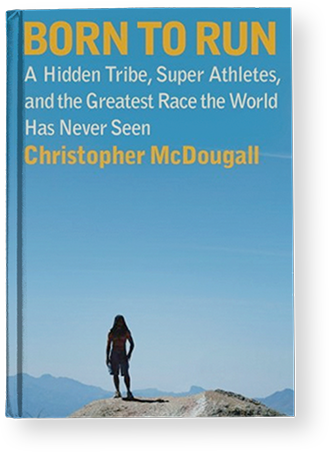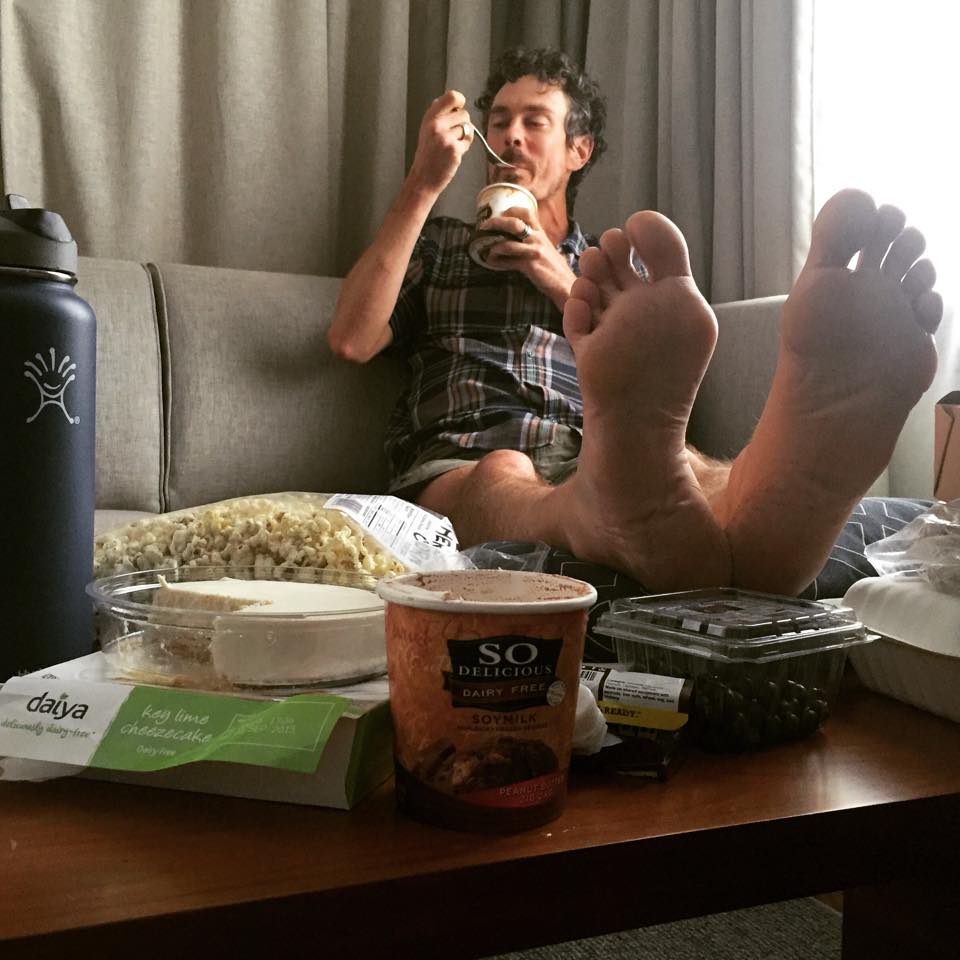by Howard E. Friedman
“What walks on four feet in the morning, two in the afternoon and three in the evening?”
Ever since Sophocles wrote this riddle for the Sphinx to pose to Oedipus around 429 BCE the answer to the clever riddle has been tinged with a sad reality:we humans who begin life crawling “on four feet” before we advance to “two in the afternoon”, can expect infirmity and a cane to walk on “three in the evening” if we are lucky enough to live into old age. To Jeremy DeSilva, paleoanthropologist and expert on foot and leg bones, the fact that we are so vulnerable is in fact one of the reasons that we upright walking humans are so interdependent on one another. Four legged animals can still get around well enough if they lose a leg. Not so for us bipedal humans. Even a minor foot injury can disrupt daily activities and losing a leg can forever change a person’s life. As a podiatrist, I have seen this time and again.
Is walking on two legs then really such a good idea after all? First Steps grapples with this question as well as issues related to the history of bipedal ambulation, tracking its origins in the fossil record, probing how walking upright has affected us as individuals, as communities and and a species.
Professor DeSilva, who studies ancient hominin foot and leg bones around the world and teaches at Dartmouth University, begins by questioning the value of walking by noting that the fastest humans are still so much slower than many four legged mammals. (“Hominin” refers to those species related to or close to humans”. ) Walking on two legs then is not a speed advantage and it is even less energy efficient than the gait of certain long legged mammals. While there is no definitive answer, DeSilva mentions the most common suggestions: walking on two legs freed up our hands to carry food or children or throw objects like rocks as weapons or use tools like sticks for digging up roots. But as an anthropologist, DeSilva cannot accept a theory without proof. And therefore he takes his readers around the world to learn first-hand from the most important fossils found so far that yield some clues as to when and where we Homo sapiens began our upright walking journey. It is these up close and personal visits to famous anthropological sits where First Steps is strongest.
First stop is Addis Ababa, Ethiopia, to see and hold the 3.18 million years old bones of the oldest most complete skeleton of an upright walking hominin, a female named Lucy. DeSilva writes tenderly about this ancient being, stating that if he had a time travel ticket he would “go to Ethiopia and spend the day with Lucy…to see how she moved, to measure every detail of her walk…”. Both Lucy’s pelvic, ankle and foot bones are consistent with upright walking. Her ankle bones are a similar to modern Homo sapien bones and her toes bones “were long and slightly curved, they had an upward tilt, indicating that she pushed off the ground with her toes like a human does while walking,” DeSilva writes. While Lucy’s knee was crushed when it was found, a fossilized knee found nearby of a similar age had an angulation of the end of the femur, called the bi-condylar angle, that is only found in bipedal walkers. Of particular interest to anthropologists however, is that while Lucy’s skeleton supports the fact that she walked upright, her skull size is still associated with a quite small brain. This is evidence, DeSilva writes, that walking on two legs preceded the large brain size we find in modern humans. And therefore, he concludes, “Lucy is the starting point for all we think we know about human evolution.”
To DeSilva’s credit a one-page very understandable evolutionary tree is printed at the front of the book for easy reference. Lucy, an Austrolapithicus afarensis, is on a limb that branches off of the main trunk that ultimately leads to Homo sapiens. Before and after that branch are other hominins with names less familiar such as Sahelanthropus, Ardipithecus and closer in time to us, Homo naledi, Denisovans and Neandertals. Branching off the main trunk toward the beginning of evolutionary time are chimpanzees, bonobos and gorillas.
But fossilized bones can only tell part of the story. Footprints are the image that is worth a thousand words.
In June 2019 DeSilva together with a colleague and a team of students discovered a hominin foot print in the Laetoli region of Tanzania near the Olduvai Gorge, a site famous for discoveries made by Mary Leakey in 1976. Other human like footprints had been found nearby and these newest footprints were further evidence of a bipedal gait now dating back over 3 million years. Heel toe. Heel toe. Some of the footprints found at Laetoli are of what appears to be a group of both adults and children walking together. It is tantalizing to imagine a family walking together millions of years ago like families still do today.
In the first half of First Steps, DeSilva details the hardware of walking, the ancient foot and leg bones and other skeletal modifications we have that facilitate walking on two feet. In the second half of the book, he writes about the software of bipedality and here he relies on various behavioral experts and other scientists. He begins this section looking at how babies learn to walk and the cultural variability around the world of what we consider a normal age to begin walking. In Western countries we expect toddlers to begin walking somewhere around 12-15 month or even a bit later. The Ache peoples, indigenous to Paraguay, carry their infants for the first two years and the children do not begin walking until that time. In contrast, in parts of Kenya and Uganda, DeSilva writes, infants begin walking around 9 months, due in part to their diligent mothers and grandmothers who massage the infants legs to help “improve motor coordination and strength”, he writes.
Prior to walking however, we need to be born and for that we need to be able to pass through the limited space available in the birth canal, itself limited by shape of the pelvis. Since human women are bipedal, the size of the pelvis has to be not so large as to impede normal walking yet large enough to facilitate birth. Four-legged animals do not have this restriction. Since the appearance of an influential article in Scientific American in 1960, anthropologists have posited that the fetus had to be born undeveloped enough that the large brain size could still fit through the pelvis, creating evolutionary pressure to favor smaller newborns and the women who gave birth to them. And furthermore, women with wider hips were thought to require greater amounts of energy when walking and certainly when running due to their anatomy. This theory though has been disproven thanks to a nearly complete pelvis found in Kebara Cave in Israel, a Neanderthal skeleton dated to about 60,000 years ago. The large size of the hip did not support a compromised gait, according to Cara Wall-Scheffler of the University of Cambridge, who studied the pelvis. Separately she noted that women of the Hazda hunter gatherer tribe walk about 6 miles a day. How could they do that with an inefficient gait she wondered? She ultimately proved that the energy required for a woman to carry a baby sized object is reduced in women with wide hips who can carry the child on the side of their body, resting it on the hip bone. Furthermore, the wide hips allow women who typically have shorter legs than men to have a longer stride. Further disproving the notion that women’s wide hips impair their gait, DeSilva cites the increasing frequency with which women continue to beat men in ultramarathons like in the 135 mile Badwater race through Death Valley and the 240 mile Moab ultramarathon. Women with wide hips, it turns out, can give birth and run fast for long distances.
DeSilva explores the uniqueness of individual human gait and interviews some of the researchers who are developing software for gait recognition. Professor Oscar Costilla-Reyes of MIT, for example, has developed an algorithm to identify people with over 99% percent accuracy by analyzing their footprints. And while gait analysis as a means to identify individuals may be too expensive or difficult for governments to implement, subtle changes in an individuals gait can indicate neurological changes signaling for example, dementia or Alzheimer’s. Intriguing as well is research by professors Ari Zivotovsky and Jeffrey Hausdorff in Israel who showed that middle school girls when walking together synchronize their gaits and do so even more when they hold hands!
In the final chapters of Foot Steps, DeSilva explores just how walking benefits us physically and mentally. He cites research that a daily walk can reduce the chance of developing breast cancer, possibly by reducing estrogen concentration in the blood. And he cites evidence that a daily walk of 30 minutes can lower the risk of coronary artery disease by 18 percent, writing that “coronary artery disease is all but unheard of among hunter-gatherers”. DeSilva further cites research that correlates increased daily walking to improved health in a group of 17,000 women with an average age of 72. The women who walked at least 4,400 steps a day had lower mortality than women who took 2,700 steps a day. And health benefits climbed as women walked even more. Walking has a long history of improving cognition too as DeSilva lists famous writers who took daily walks to help their creative process. It worked for William Wordsworth, Ralph Waldo Emerson and Henry David Thoreau among others. Brain MRI studies back up these findings. In one study, regions of the brain associated with creative thinking showed an increase in connectivity in the people who walked regularly. Another MRI study showed an increase in the size of the hippocampus in people who walked regularly compared to those who did not. The hippocampus is involved with learning and memory.
Of course, the news is not all good for us bipedal humans. Ask anyone who has torn their ACL ligament in the knee, had a total knee replacement, ankle fusion or sprained their ankle badly. The last injury is uniquely human as our primate cousins do not even have the anterior talo-fibular ligament which is the one we usually tear. Overall, however, Dr. DeSilva concludes, “The advantages of bipedal locomotion obviously outweigh the cost. Otherwise we would have gone extinct long ago.” But since we are among the few species that walk upright, “what tipped the scales toward survival rather than extinction”, he asks?
To answer that question DeSilva returns to the hardware of walking on two feet, a fossilized tibia from the Lake Turkana region of northern Kenya, dated to 1.9 million years ago. The tibia shows a healed fracture in an adult hominin. The fact that this ancient hominin survived strongly suggests, DeSilva writes, that her community supported her quite literally while she convalesced. And other ancient fossils also show healed fractures from serious injuries suggesting that this was not an isolated event. Having only one good leg to stand on made a limping individual dependent on other community members, and it seems their fellows rose to the occasion. While DeSilva argues that empathy was a prerequisite for our social species to develop as it did, as “the last bipedal ape on Earth” he writes, we should embrace “our capacity for empathy, tolerance and cooperation” and appreciate how those human attributes are intertwined with our most basic activity, walking on two feet.
Howard E. Friedman
-30-






 So what is going on here? For hundred of years, adventurers needed no outside encouragement for their adventures. They were self-motivated. Sir Edmund Hillary famously quipped that he climbed Everest “because it was there”. That was actually a throw-away line answering a reporter. He climbed Everest out of a deep attraction to the outdoors and a desire to see just what humans can accomplish. And so it has been with expeditions around the globe. Alexander von Humboldt attempted in 1799 to climb Mt. Chimborazo in Ecuador, thought to be at that time the highest mountain in the world, documented so well by Andrea Wulf in the beginning of her 2015 book “
So what is going on here? For hundred of years, adventurers needed no outside encouragement for their adventures. They were self-motivated. Sir Edmund Hillary famously quipped that he climbed Everest “because it was there”. That was actually a throw-away line answering a reporter. He climbed Everest out of a deep attraction to the outdoors and a desire to see just what humans can accomplish. And so it has been with expeditions around the globe. Alexander von Humboldt attempted in 1799 to climb Mt. Chimborazo in Ecuador, thought to be at that time the highest mountain in the world, documented so well by Andrea Wulf in the beginning of her 2015 book “
 Anyone on the trail either hiking or running invariably wonders at some point, “How far could I go if I had the time?”. With a subtitle of “How a Daring Band of Misfits Mastered the Lost Secrets of Strength and Endurance”, Christopher McDougall attempts to answer the question of just how much we can endure, both physically and psychologically, when put to the challenge. And in answering those questions he aims to understand “the art of the hero”, and to explore the “foundation of both Greek theology and Western democracy: the notion that ordinary citizens should always be ready for extraordinary action.”
Anyone on the trail either hiking or running invariably wonders at some point, “How far could I go if I had the time?”. With a subtitle of “How a Daring Band of Misfits Mastered the Lost Secrets of Strength and Endurance”, Christopher McDougall attempts to answer the question of just how much we can endure, both physically and psychologically, when put to the challenge. And in answering those questions he aims to understand “the art of the hero”, and to explore the “foundation of both Greek theology and Western democracy: the notion that ordinary citizens should always be ready for extraordinary action.”








